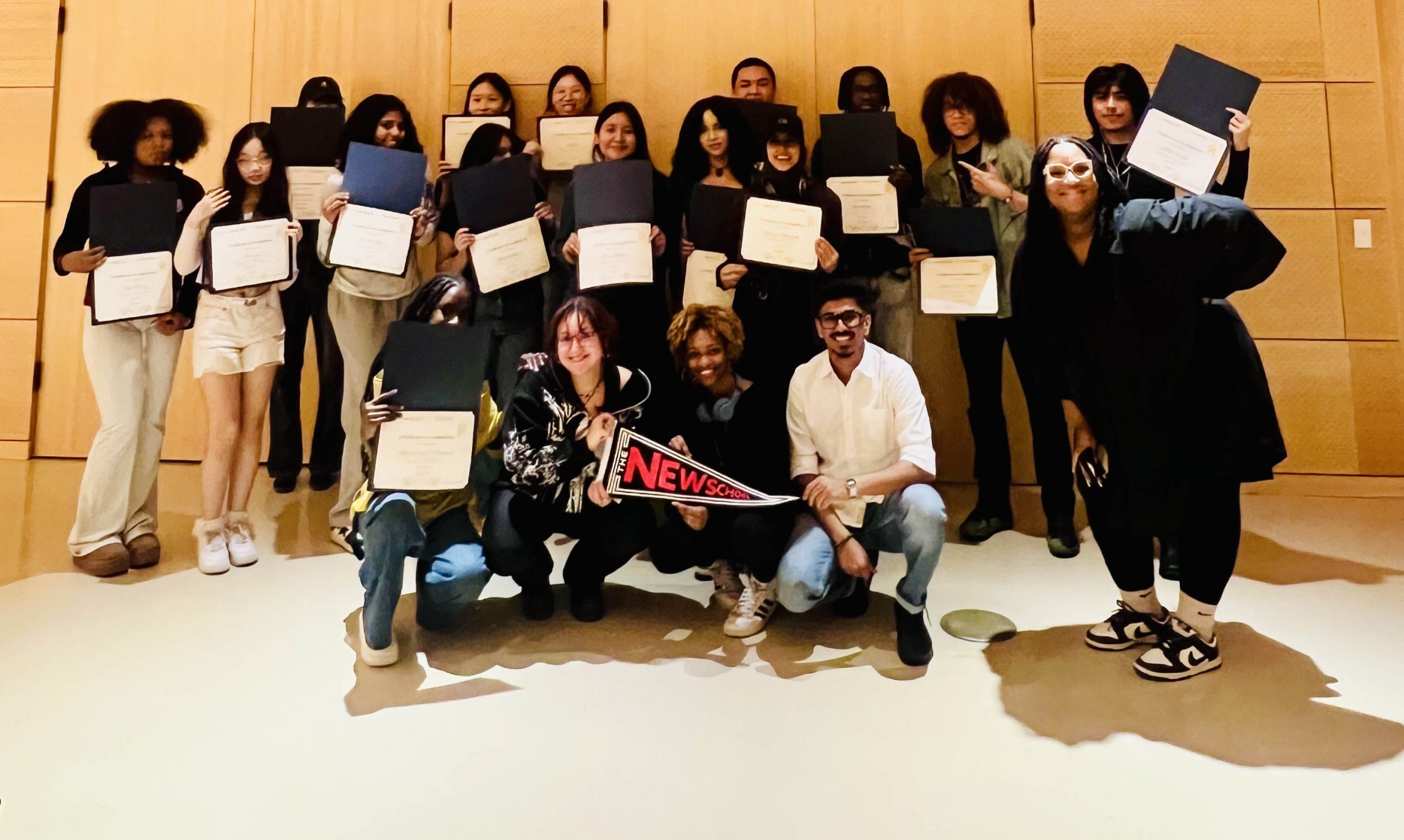
New York’s Higher Education Opportunity Program Provides Access and Support for New School Students
The transition from high school to college can be a daunting experience, with first-year students having to acclimate to a new school and new classmates. Students may face additional challenges because of their personal circumstances. To assist these students, The New School participates in New York State’s Arthur O. Eve Higher Education Opportunity Program (HEOP). The program was created to provide access, academic support, and financial aid to New York State residents who show promise for succeeding in college but because of educational and economic circumstances may not enroll.
JJ (Janzel) Santos, a first year Parsons student interested in pursuing a career as a nomad photographer, is one of those students. A fortuitous encounter with a stranger on the subway led him to The New School and HEOP. “During my senior year, I was on a train talking to one of my friends about choosing colleges. It was so hard; there are so many colleges to choose from, but it was hard to find which ones offer photography, or other art programs,” says Santos. “A woman sitting next to us said, ‘Look up Parsons.’ I looked it up and discovered it was a school of design with much more than just photography—with technology, fashion, psychology. I never got her name but I hope I can thank her for getting me here.
“An assistant at my high school told me I could get in through HEOP which will give you benefits. I clearly remember that lady on the train telling me that they’ll pay for your four years. I got right on that.”
HEOP has been at The New School since the 1970s and is open to incoming undergraduates enrolling at Eugene Lang College, Parsons School of Design, and the College of Performing Arts. Potential participants are identified during the application process, either by indicating their interest in being a part of HEOP or by an admissions reviewer who feels the applicant might be a good fit. “Those under consideration have to meet certain academic guidelines and financial guidelines to be HEOP eligible. We then interview students to learn more about them as individuals outside of their application materials and their interest in HEOP,” says J’Andrea Barrow, director of HEOP at The New School.
During the summer, Santos joined the 16 other students in this year’s cohort of HEOP participants for a five-week preparatory experience designed to acclimate students to university life. They take noncredit courses, attend workshops, and build relationships with their peers, staff, and faculty members to prepare for the fall. “One of the great things about coming in as part of a cohort during the summer is you can build relationships with people who have a similar background or are planning to study similar things, and you can begin to build your community,” says Barrow. “Students can continue to support one another during the year, and once we have a new cohort enrolling in the following year, the HEOP students who are already here can serve as mentors and continue to build this community.”
“The students were on campus Monday through Thursday for a full day attending classes, workshops, and community building experiences,” says Barrow. “Everyone had three of the same courses—in writing mechanics, biology, art, and social justice—and an interdisciplinary lab. The students enrolled at Parsons also took Introduction to 3D and the Lang students took Narrative Maps. Students were required to attend tutoring and workshops once a week to meet folks from some of the other resource departments. We also had time for the students to do some community building with one another.”
Farrah Khan, a Lang student interested in politics, enjoyed the head start to her college experience provided by the summer intensive. “It’s a very community-based program, and I clicked well with my classmates, the mentors, and staff,” says Khan. “Even though it was a summer program, it was real and meaningful work. In the interdisciplinary lab, we focused on food—how certain industries control the food market, and problems like pricing and health. The workshops gave us a chance to meet staff in several departments like Career Services and Student Advising. We also had sessions that helped us with skills like goal-setting and learning how to design your own life.” Although the summer program did have a focus on getting the students up to speed academically, giving students an opportunity to start building connections within the university was a major goal. “We had a lounge area set up for us in the University Center that I feel is a fundamental part of the program. That’s where most conversation happens and where we have the opportunity to interact and talk casually with one another.”
Although there are nearly 50 universities in New York that offer HEOP, only a few are equipped to support students whose interests lean toward creative fields. “Part of what makes The New School’s HEOP program so special is we give students the opportunity to continue to practice design and the arts and focus on what it means to be an artist or an innovator while continuing to receive the financial and academic support that will help them succeed,” says Barrow.